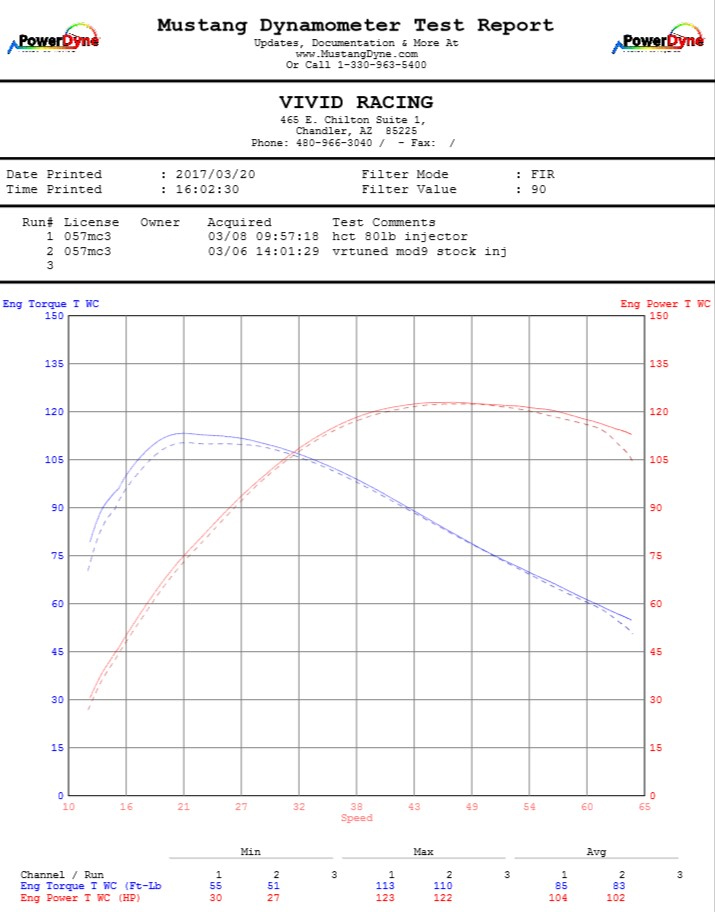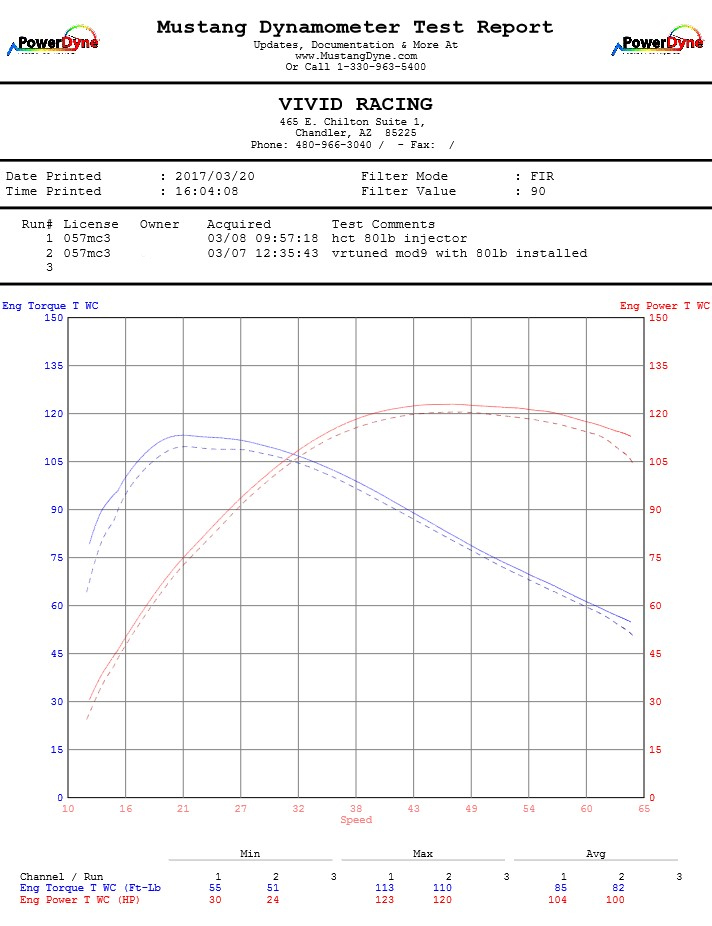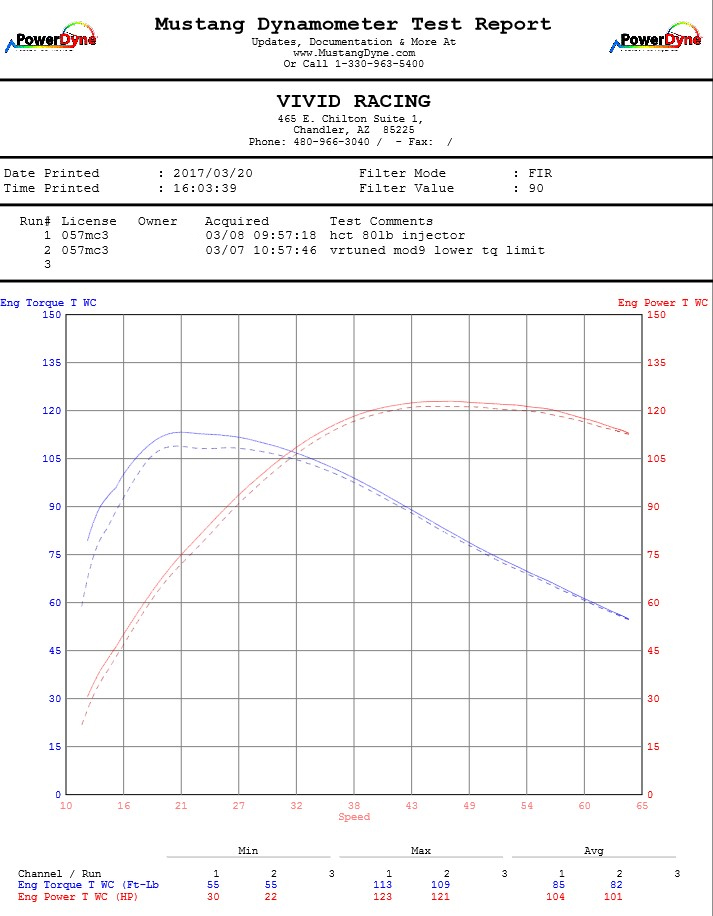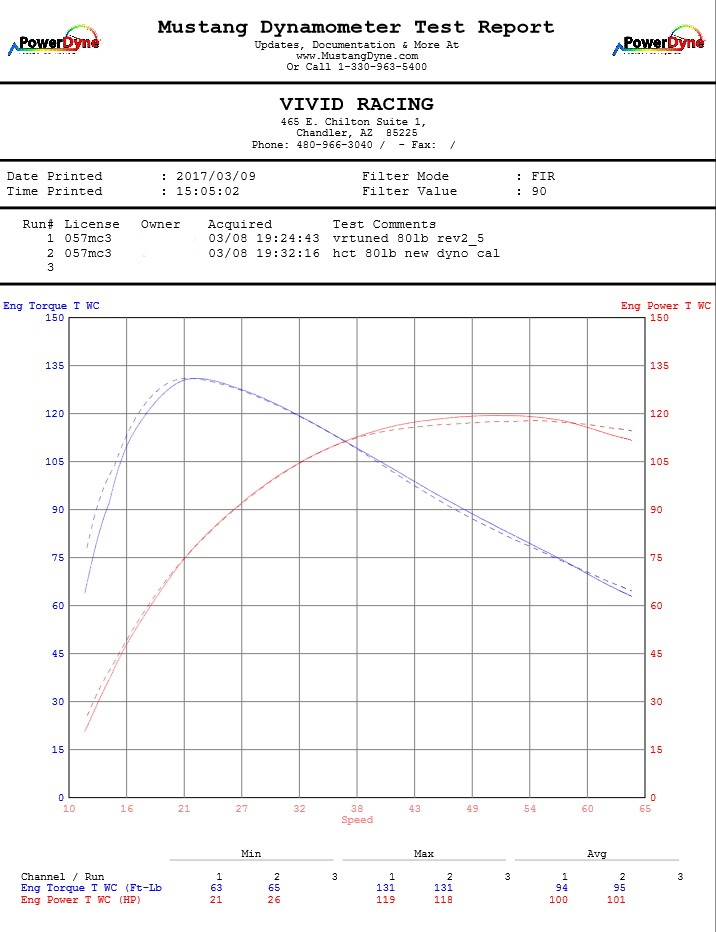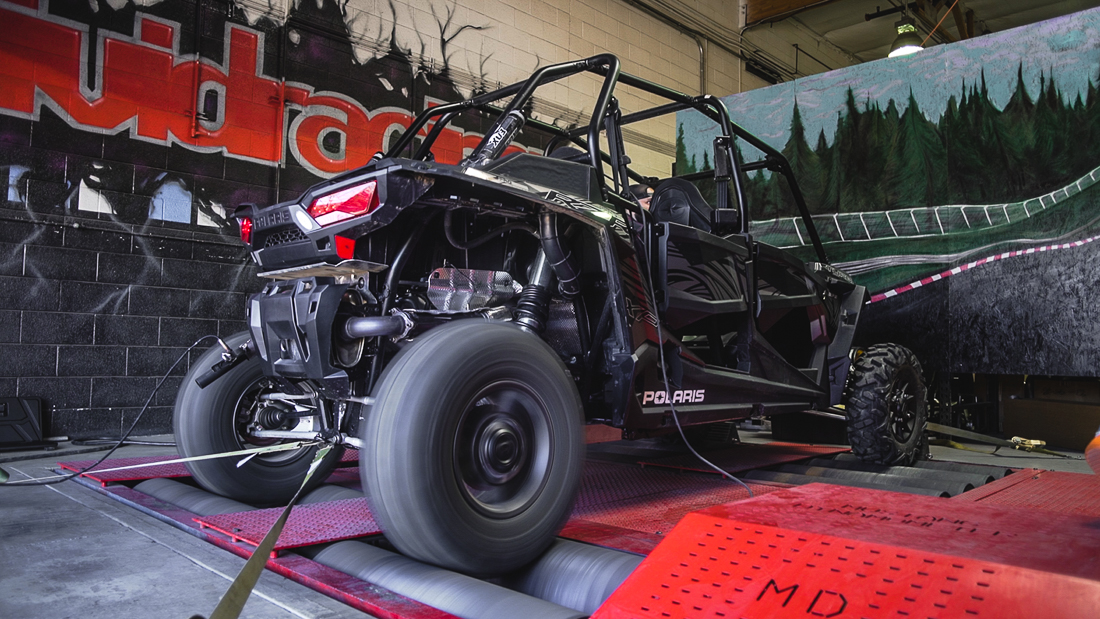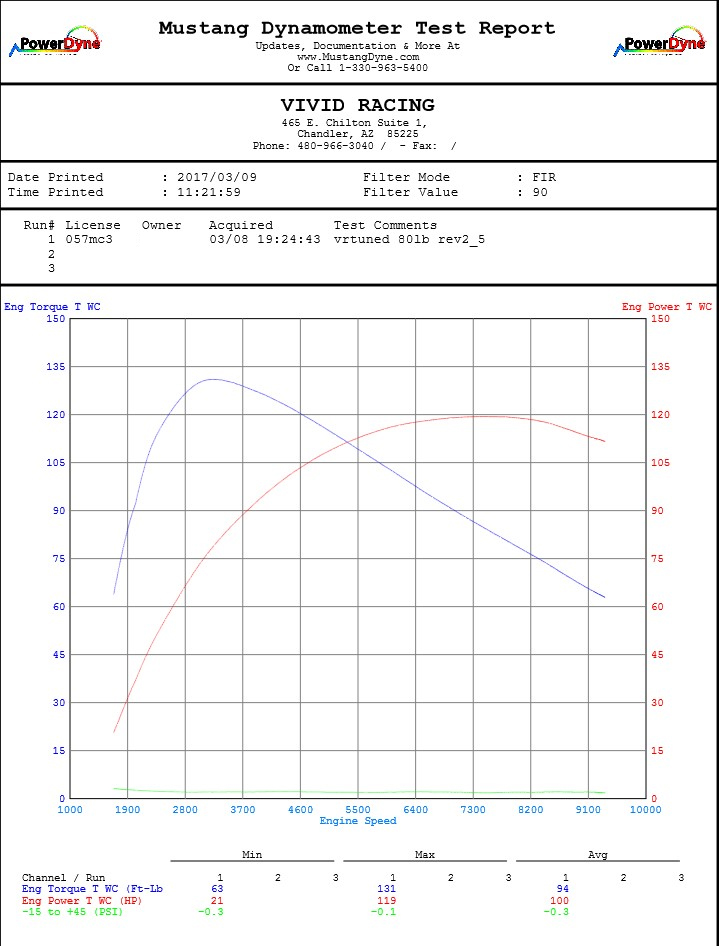With our Stage 1 ECU Tuning for the Polaris RZR XP Turbo completed, we wanted to tackle a more aggressive ECU flash using larger injectors like some of the competition does. But why use larger injectors? Are the stock injectors maxed out, is it safer to have more fuel coming from the Siemens Deka 80lb injectors? Well we are going to do some tests and tell you what we found out in layman’s terms. But first, lets get you hyped up with a video!
If you don’t already know, there are some differences between the 2016 and 2017 RZR XP Turbo. The 2016 came with 144hp where the 2017 came with 168hp. This is a pretty familiar situation to us in the performance car world. Manufactures will increase the power output between models that wear a different badge or a year later model when they have the same engine. Sometimes the “R” or the “S” model might have 10-15 more horsepower than stock. The manufacture has already planned for this without significant changes to the vehicle where this gain is just done in the mapping. With the RZR, the 2016 uses 48lb/hr injectors where the 2017 has 55lb/hr injectors. When it comes to the ECU, both 2016 and 2017 use the same Bosch MED17.9.74 tricore processor. However the software and mappings are different between the two year models.
To not take away from others who have tested and created proven working ECU flashes for the RZR XP Turbo, we were able to use that as a benchmark to compare. As they say, “imitation is the greatest form of flattery”. There is no point to recreate the wheel, but how can we develop our own wheel to meet and compete with others. If you have a friend that runs a 11 second 1/4 mile, you do what you can to meet or beat that time. So to get our benchmark we needed to test against an already established ECU tune. Luckily, one of our customers decided to upgrade his 2016 XP Turbo to a full AEM Standalone ECU to get the most out of his RZR as possible, which left us with an already tuned ECU with bigger injectors. Our first test was to see what this car would do on our Mustang AWD Dyno running 91 octane. This is the same car we did our Stage 1 tests on so the only variable change was the injectors and ECU.
The injectors were very easy to swap in and out for testing and comparing as seen here on this installation write up. With the injectors installed and ECU plugged in, we went for our baseline. We did several tests to make sure our numbers were consistent. You have to take dyno numbers with a grain of salt because the way you do a test with the CVT transmission as well as the type of dyno (ie. Mustang, Dyno Jet, Maha, Dyno Dynamic, Dynapak) will greatly vary the numbers shown. The Mustang Dyno is one that is closest to replicate real world driving conditions under load. At the end of the day we want to show the overall gain or comparison. Our tests were done the same as our Stage 1 running from 10-65mph. You can see here we have a peak of 123 rear wheel horsepower with the competitors ECU flash and larger injectors.
So the first thing we wanted to do is to run our Stage 1 Mod 9 flash. Since the 80lb injector file is meant for a 2016 144hp car with 48lb injectors stock, the gains or improvements might not be as big on the 2017. So here we have our test comparing. We were under in both torque and horsepower. Torque is important because that is what you FEEL on take off. It is interesting to see the similarities in the curves. Boost levels were about the same around 16-17psi.
So next test we would do to start creating a larger injector file is taking our Stage 1 file and adding the 80lb injectors. Here we lost more TQ and HP than with the stock injectors most likely because of to much fuel. You could see the AFR (not plotted) with our Stage 1 file running rather rich at around 11.1 where these turbo vehicles should be about 12-12.5 afr.
So the first thing to do is to figure out how to bump up the torque for that strong launch feeling. What you usually do in most vehicles is raise the torque limiters to improve this. Our torque marginally improved but the horsepower took a hit up top.
So next we decided to lower the torque limiters to see what the opposite change would do. This helped the horsepower to get back up but the torque was still effective. So now we know which changes effect the curve.
The final test might throw you for a loop if you look at the numbers. This is why the dyno numbers are not as important as the gains. With a Mustang Dyno, you can calibrate the vehicles RPM, change the parasitic multiplier, change the HP @ 50mph which is related to wind speed, the weather station which takes into account humidity, temperature, and other variables that effect the outcome. In between tests, we put a Mercedes CLA250 on the dyno and calibrated it to test a product for that car. This calibration made getting back to the the RZR exact calibration impossible. So to keep our variable the same, we then reran the competition ECU again labeled as “new dyno cal” to get our benchmark. With our latest change to the ECU labeled rev2_5, we were able to achieve the improved torque and horsepower that we wanted to.
Because of boost levels, we had to additionally make changes to the file to not incur the infamous 1127 overboost code. This allows a further test up to 75mph with a raised redline and not go into limp mode. With the file dialed in, we did some back to back 0-60mph tests using a PerformanceBox GPS meter. The PerformanceBox measures things like acceleration, deceleration, lap time, and other functions via satelite. With 0-60 tests, it will give you the plain to show if you are on a incline or decline that might hurt or help those numbers. Our 0-60 tests were done back to back on the same start points. The only variable was swapping out the ECU. According to ATV.com, the 2016 XP Turbo does 0-60mph in 5.89 seconds where the 2017 with an additional 24hp does the 0-60 in the low 5’s. Comparatively, the 154 hp Can-Am Maverick X3 does 0-60mph in just 4.9 seconds. However, much like car tests, manufactures do these in very controlled conditions with 93 octane, cool temperatures, proper air pressure, and track surface. Our tests reveal a 5.13 second 0-60 vs the competitions 5.32 second 0-60. If you have the PerformanceBox software, you can download the VRTuned Test file here and the competition test file here.
So the verdict on the 2017 Polaris RZR XP Turbo tuning with bigger injectors?
The additional fueling from the Deka 80lb injectors are tuned in to provide safe and efficient fueling. On the dyno, the gains between a Stage 1/2 and a big injector file are not that dramatic as they would be on a 2016. However there are gains and improvement. Testing in the field, each owner reported the cars being blistering fast racing against other tuned 2016 and Maverick X3 cars. So adding the injectors with a proper tune can be worth while. To note the obvious, the comparable file was originally meant for a 2016 RZR XP Turbo with only 144 horsepower and smaller injectors. That vehicle needs the larger injectors to really gain the big power people are going for. Since the 2017 has more power from the factory, you can only tweak that engine so much. This goes back to the first paragraph talking about different vehicle variants. For example, the Porsche 997.2 Turbo comes with 500hp and the Turbo S with 530hp. When you tune either one of them, you get a max of 615bhp. The platforms are the same including the turbo size, exhaust, injectors, etc, but the S has different mapping.
Theoretically you can put the 2017 168hp mapping in a 2016 144hp ECU to get the 24 horsepower gain some tuners show. With the 2016, you need to add larger injectors so they are not maxed out with more boost and timing to gain that extra 40hp claimed in Stage 4 tunes. Its apparent that the 925cc engine is really maxed out with your basic bolt-ons to about 190 horsepower. Further gains would be possible by changing out your RZR XP Turbo compressor wheel or building the engine. Of course adding other parts such as the diverter valve, intake pipe, and other efficiency parts will show gains in different parts of the power curve.
To reach that 190 horsepower mark, a 2016 is best upgraded by doing the ECU Flash, bigger injectors, and exhaust while the 2017 can reach its potential by doing just a flash and exhaust where the injectors are optional.
Final Dyno Sheet




